How To Rig Live Shrimp
A live shrimp is one of the best natural baits to use to catch popular saltwater species such as redfish, tarpon, seatrout, bonefish, snook and many others. Just about any gamefish that swims will eat a live shrimp if the small crustaceans are readily available in their home waters. Are you unsure how to rig a shrimp? Here are five time-tested, easy ways to rig a live shrimp.
How to Rig a Live Shrimp to Drift in the Current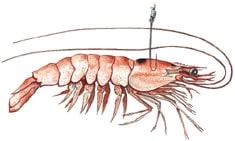 Hooking a live shrimp through the head is a great option when drifting live shrimp behind the boat or in the current.
Victor Cormier
Hooking a live shrimp through the head is a great option when drifting live shrimp behind the boat or in the current.
Victor Cormier
If you intend to drift a live shrimp in the current or suspend it below a float rig or popping cork, you’ll want to take advantage of its natural kicking action, which often pushes the strike button of many game fish. Keep the shrimp alive, and don’t make the common mistake of using too large of a hook.
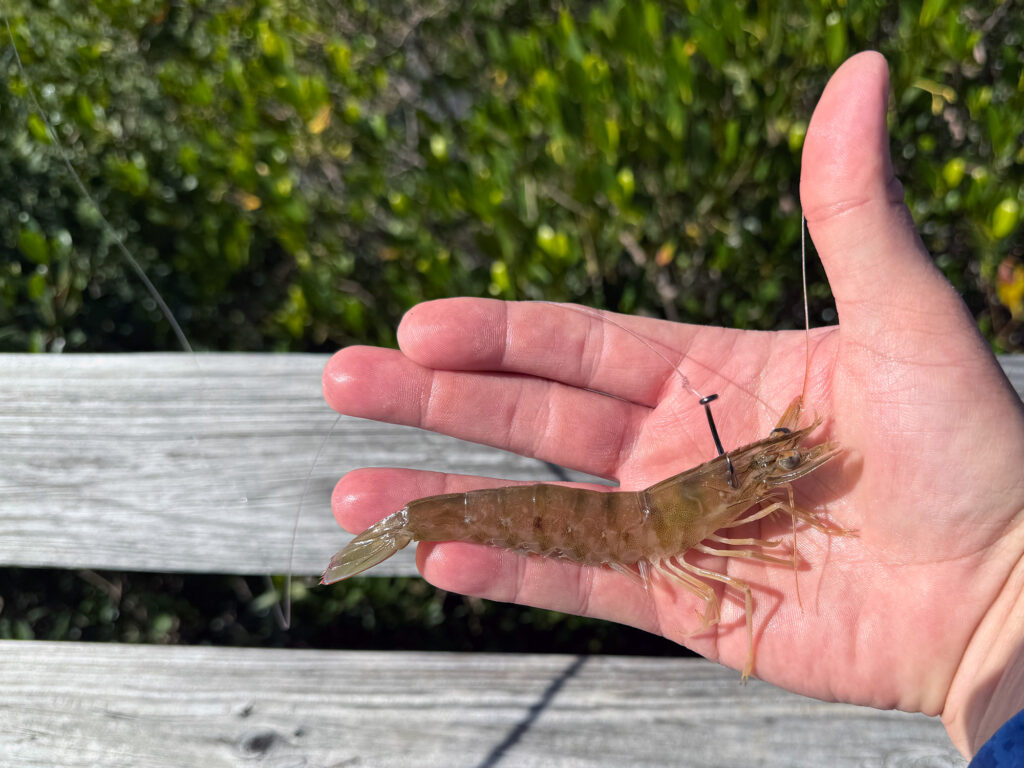 Push the hook through the top of the carapace.
Sam Hudson
Push the hook through the top of the carapace.
Sam Hudson
The best way to do this is to hook the shrimp through its carapace. However, it is important to avoid the shrimp’s stomach and pancreas, which appear as two translucent dark spots. One tried-and-true method is to hook the shrimp crosswise through the carapace, just under the tip of the shell.
How to Rig a Shrimp on a Jighead Hooking a shrimp under the chin is a prime spot to prevent your shrimp from flying off the hook when casting. Don’t hit the black spot.
Victor Cormier
Hooking a shrimp under the chin is a prime spot to prevent your shrimp from flying off the hook when casting. Don’t hit the black spot.
Victor Cormier
When casting live shrimp, consider rigging up with a jighead. Jigheads provide more casting distance and make the shrimp easier to impart action. For example, anglers wanting to bounce a shrimp along the bottom, rig up with the lightest-weight jighead that will hold bottom.
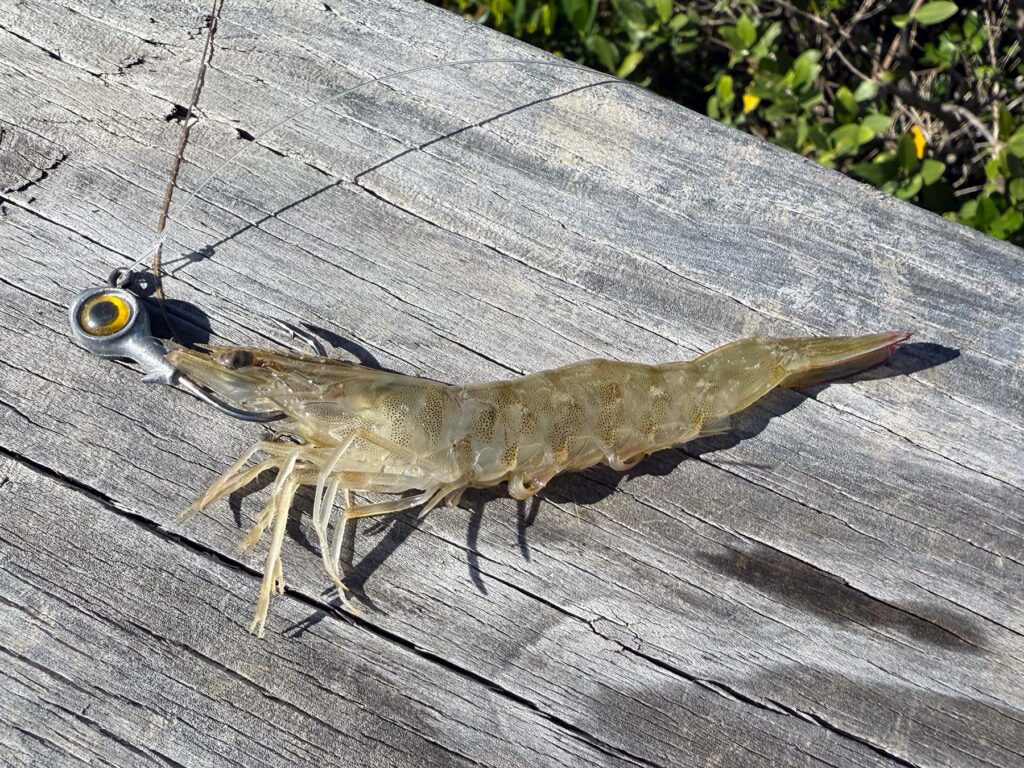 Thread the jighead under the chin. Don’t hit the black spot.
Sam Hudson
Thread the jighead under the chin. Don’t hit the black spot.
Sam Hudson
The hook point is threaded under the “chin” and exits through the center of the carapace, just behind the “horn” and between the vital organs. When hooked in this way, the shrimp won’t live as long as it would if hooked crosswise through the carapace.
How to Tail Hook a Live Shrimp Removing the shrimp’s tail allows for extra scent to emit from your offering, helping attract gamefish.
Victor Cormier
Removing the shrimp’s tail allows for extra scent to emit from your offering, helping attract gamefish.
Victor Cormier
When casting distance is important, as it can be when trying to get a bait in front of a cruising fish, it’s best to hook the shrimp through the tail. This will place the heavier head section forward while reducing the chances of the shrimp tearing off on the cast. Also, removing the shrimp’s tail fan will emit a scent that attracts fish.
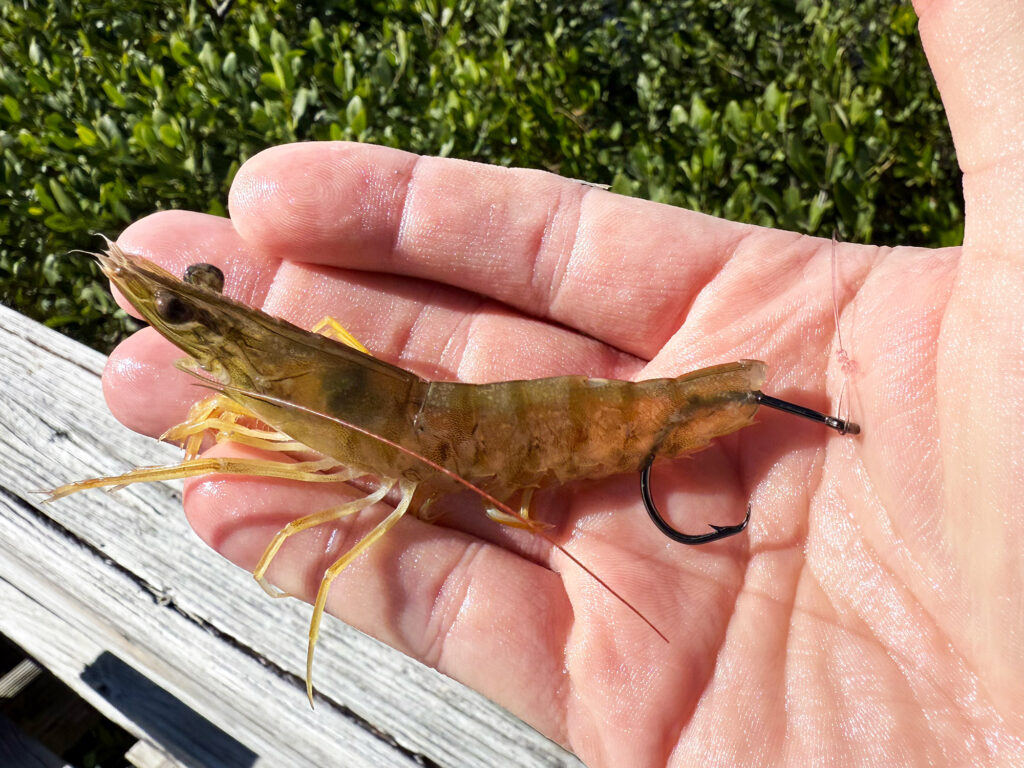 Break off the shrimp tail fan and thread the hook through the tail.
Sam Hudson
Break off the shrimp tail fan and thread the hook through the tail.
Sam Hudson
After breaking off the tail fan, thread the hook through the center of the tail until the entire shank is hidden and push the point through the underside of the tail. Now push the tail over the hook eye and knot to hide them. A baitholder-style hook will help prevent the shrimp from sliding off the hook, but J-hooks and circle hooks also work in common on-the-water scenarios.
How to Rig a Live Shrimp Weedless Sometimes, the hook must be hidden inside the shrimp to prevent grass or vegetation from marring your presentation.
Victor Cormier
Sometimes, the hook must be hidden inside the shrimp to prevent grass or vegetation from marring your presentation.
Victor Cormier
Many artificial shrimp lures are rigged weedless. Keep that in mind when tossing live shrimp too. Certain fish species are picky (sheepshead), and they won’t strike if they notice an exposed hook. Secondly, the environment in which you’re fishing plays a major role. Around wood structure, oysters or grass that’ll easily attract and hang up exposed hooks, try going weedless by burying the hook inside the live shrimp.
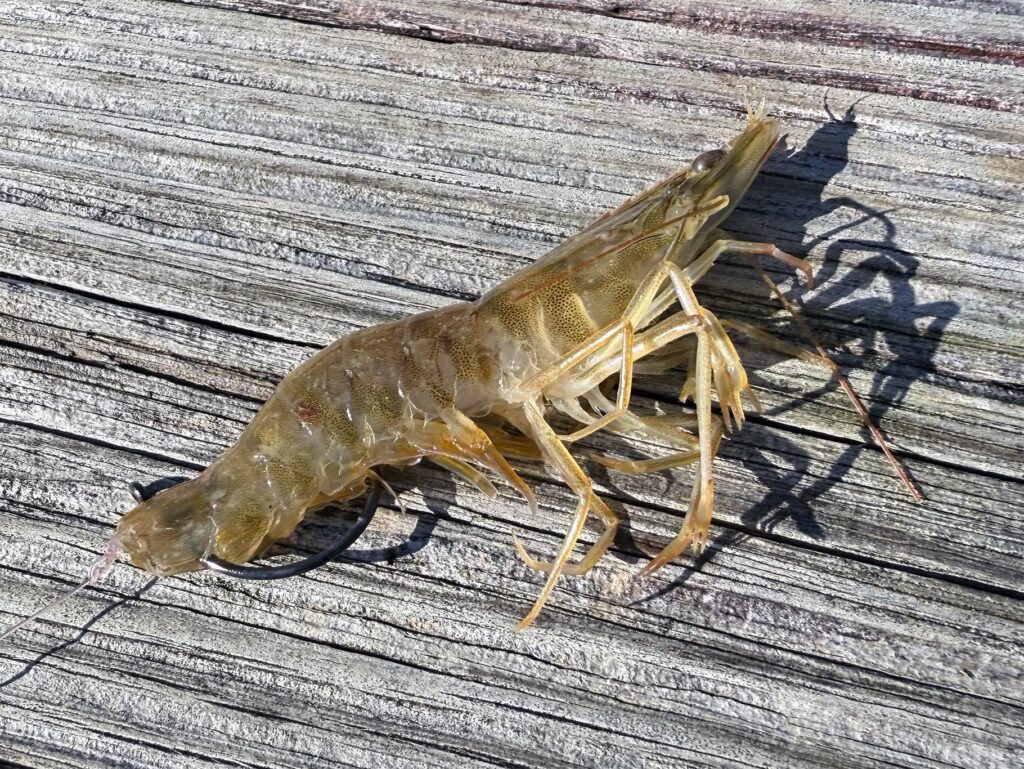 To make a weedless casting rig, thread the hook through the tail and hide the hook in the body.
Sam Hudson
To make a weedless casting rig, thread the hook through the tail and hide the hook in the body.
Sam Hudson
To make a weedless casting rig for fishing in grassy areas, break off the tail fan and push the hook point all the way through the tip of the tail. Pull the shank out of the tail and invert the hook, so that the point faces the underside of the shrimp. Lastly, embed the point of the hook in the tail meat.
How to Rig a Live Shrimp for Casting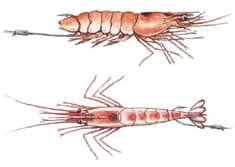 Run the hook crosswise (bottom) or up through the tip of the tail.
Victor Cormier
Run the hook crosswise (bottom) or up through the tip of the tail.
Victor Cormier
Yet another way to rig a shrimp for basic casting and drift-fishing is to run the hook through the tip of the tail, either crosswise or up through the center of the tail. The latter keeps the hook point clear of bottom snags. Many experts prefer this method because it allows the shrimp to kick freely and puts the hook in a good position for striking when a game fish eats the bait head-first. The tail fan can be left on, or removed to provide additional scent.
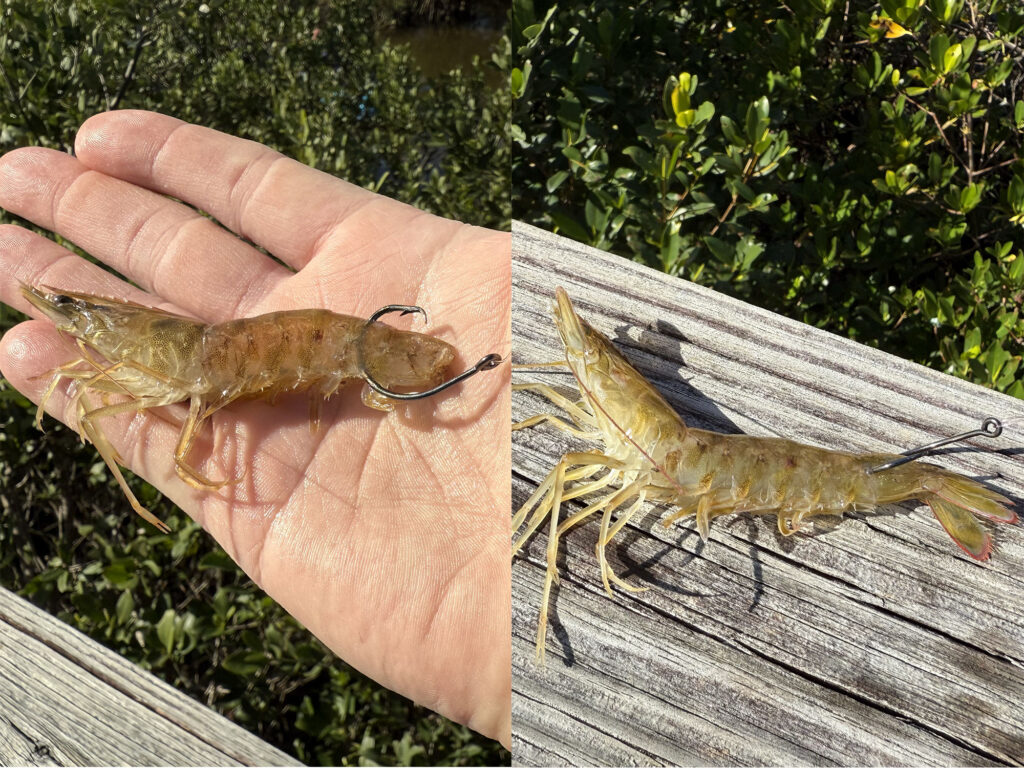 When your goal is a natural presentation, hook the shrimp in the tail, not at the head. Run the hook up through the tip of the tail (left) or crosswise (right).
Sam Hudson
When your goal is a natural presentation, hook the shrimp in the tail, not at the head. Run the hook up through the tip of the tail (left) or crosswise (right).
Sam Hudson
The post How To Rig Live Shrimp appeared first on Salt Water Sportsman.
- Home
- About Us
- Write For Us / Submit Content
- Advertising And Affiliates
- Feeds And Syndication
- Contact Us
- Login
- Privacy
All Rights Reserved. Copyright , Central Coast Communications, Inc.